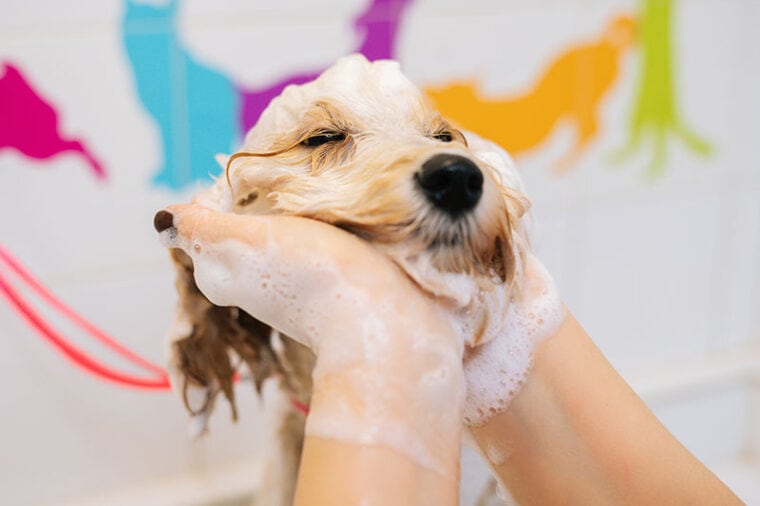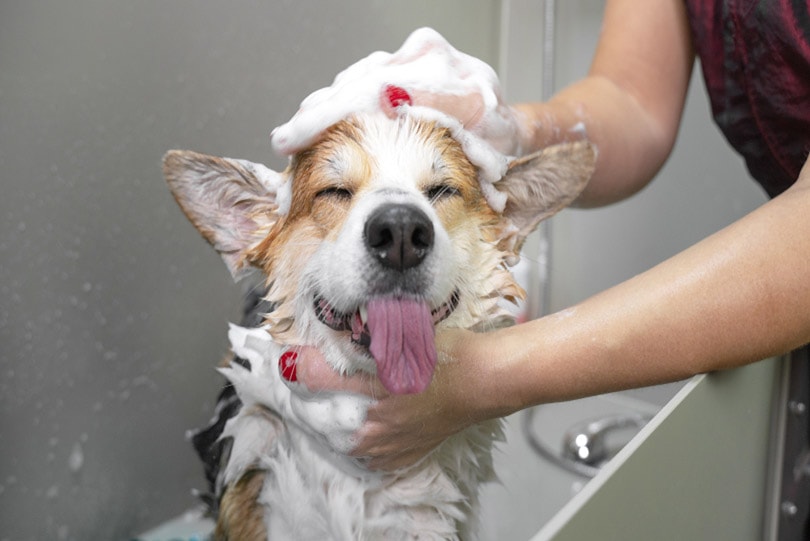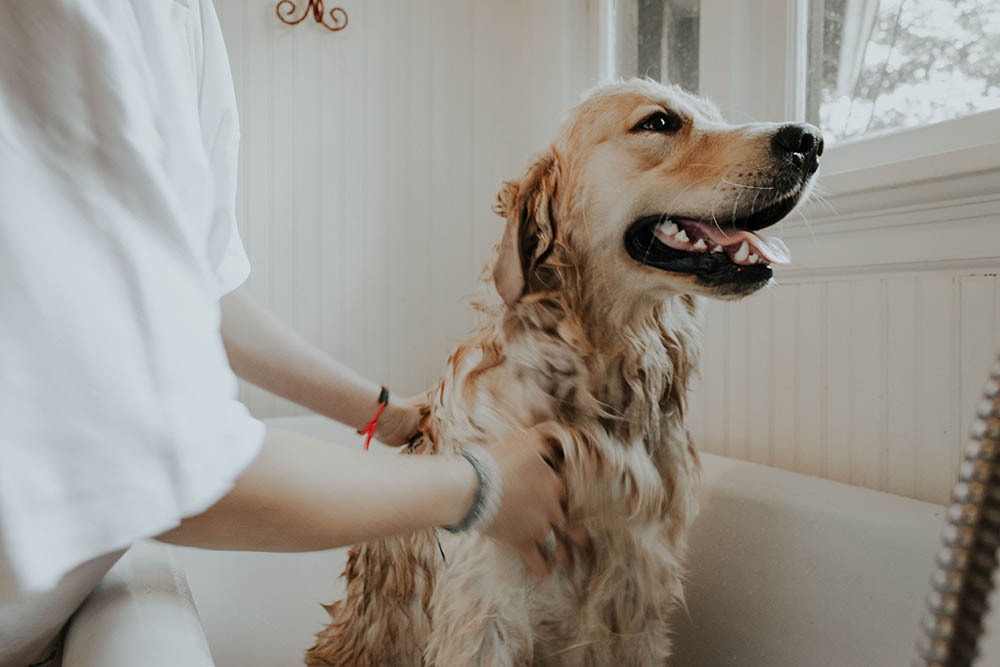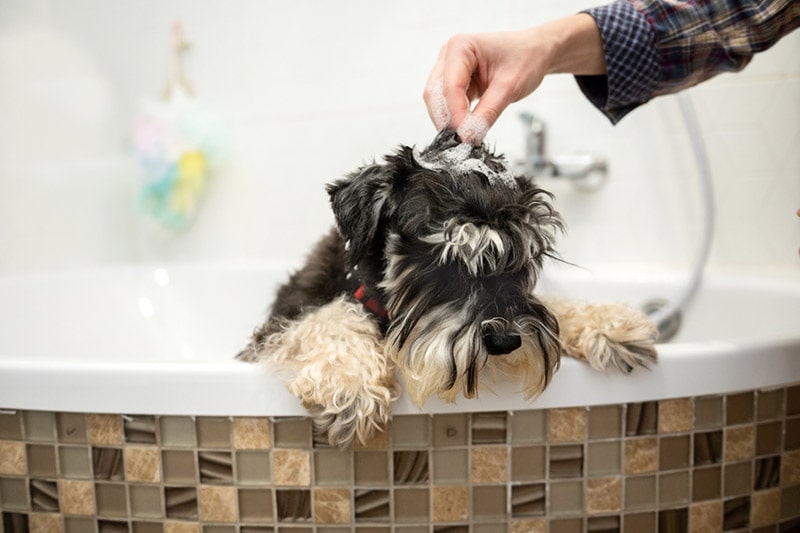
Bathing our dogs is a necessary aspect of cohabitation with our canine friends. Many dogs tend to enjoy frolicking and rolling about in things that we generally find dirty, smelly, and sometimes disgusting.
But bathing your dog shouldn’t affect your daily routine too much. In fact, the ASPCA recommends only bathing your dog every 1 to 3 months. There are certain circumstances where dogs may need more frequent bathing, of course—for example, if they are frequently outdoors or have certain skin conditions. However, some owners may admit that they haven’t bathed their dog all year, and their dog (and their own noses) haven’t suffered for it.
Like countless aspects of pet ownership that remain ambiguous, the frequency at which you should bathe your dog is variable.
The 4 Factors That Influence Bathing Frequency
How often you bathe your dog depends on several factors.
1. Their Breed and Coat Type
Dogs with short coats may need to be bathed less often than those that have medium to long coats, as they typically require more general daily maintenance. Those with short coats may only need to be bathed every 1 to 3 months, while long coats are prone to getting tangled and matted and so require regular grooming and care and may need weekly bathing.

2. Their Environment and Lifestyle
Maybe your dog lives with you in a town or city, where they are less likely to find themselves submerged in a muddy pond. Their environment will influence how much they need to be bathed, as will the seasons. Activity levels are also a factor—a dog that spends most of their time lounging about on the sofa with a daily walk around the streets will need less bathing than one that is exposed to the elements and perhaps running off-leash for hours a day.
3. Any Underlying Health and Skin Conditions
Dogs that have allergic skin diseases, parasites, or any other skin conditions may be prescribed a medical shampoo to aid in treatment. Your veterinarian will advise the specific bathing regime, but it often involves a frequency of once to twice weekly for a set period. These shampoos normally work to alleviate any general itching and discomfort and to calm the fungal and bacterial overgrowth that occurs with many skin conditions. In some cases, shampoo can be sufficient for treatment rather than oral medication.

4. Owner Preference
Some owners are particularly sensitive to the canine “fragrance.” If your dog is allowed on furniture and bedding, you may desire to bathe them more often. People who have potential allergies to pet fur find that bathing their dog improves their symptoms, as the dander is washed away. If more frequent bathing is preferred, just ensure that it isn’t detrimental to your dog by keeping an eye on their coat health and skin dryness.
Can I Bathe My Dog Too Much?
With all the factors taken into consideration, the recommended bathing frequency spans quite a wide range, anywhere from weekly (if treating an underlying condition or upkeeping a high-maintenance coat) to once every 3 months (for a healthy, short-coated dog). That said, there is the potential to over-bathe your dog.
The skin has natural defenses and protective barriers that keep it healthy and functional. Bathing your dog too frequently can cause the skin to dry out, destroying the biological barrier made by the skin’s natural oils and cells. Healthy skin also contains a certain number of bacteria and yeast that exist at low levels. When the natural barrier is disrupted, this causes them to proliferate, resulting in itchy, dry skin and potentially, infection.
Also, if you have a dog with a double coat, such as a German Shepherd, Siberian Husky, or Labrador, you could disrupt the natural process of self-insulation that occurs with the seasons. It also takes much longer for them to dry.

What Are the Signs That My Dog Needs a Bath?
You can let your nose be the consultant for when your dog is due for a bath. If they are emitting that certain doggy smell or have dry, flaky skin, it may be time for them to have a wash. Baths are also good opportunities to do a thorough examination of your dog. You can check their ears, search their body for any lumps and bumps, and make sure they don’t have any fleas or ticks.
What Shampoo Should I Use on My Dog?
It is important not to use a harsh human shampoo on your dog’s skin. Human skin has many more cell layers than a dog’s, meaning that it’s thicker. It is also more acidic. Human shampoos are designed to keep our skin at a pH level of about 5.5, whereas dog shampoos keep their pH level at their more neutral level. Over time, the use of human shampoos on dogs’ skin could lead to dryness or an imbalance in pH levels that can lead to bacterial or yeast infections.
Soft, gentle shampoos designed for dogs are recommended, such as Hepper’s Colloidal Oatmeal Pet Shampoo. It is made with natural ingredients designed to balance the pH of the skin and is free of soaps, dyes, gluten, DEA, sulfates, and phthalates. It is great for dogs with sensitive or itchy skin and provides a soothing, nourishing formula with a lovely, refreshing scent that is also pleasing for the humans in the household.

Final Thoughts
While the world of scent in dogs is difficult to comprehend with our own inadequate olfactory systems, this desire for dogs to blend in with their surrounding environment is instinctual. Try as we may to command them not to, they will continue to roll around in poop! If you have any worries about your dog’s skin health and they are showing any signs of itchiness, redness, discomfort, and scaling, seek the advice of your veterinarian to rule out underlying disorders and diseases before undertaking a specific bathing routine.
Also, make sure to provide plenty of positive reinforcement and rewards during bath time, to ensure that the monthly or quarterly bath doesn’t become a battle that you both come to dread. Bathing may always be something that your dog reluctantly tolerates, and treats and praise go a long way toward keeping the peace in the long run.
Featured Image Credit: Dikushin Dmitry, Shutterstock






